what happened to the percentage of americans living in cities between 1790-1840
U.South. Demography Bureau // Wikimedia Commons
How America has changed since the offset Census in 1790
The U.S. Demography Bureau announced Apr 26 that the country'south population betwixt 2010 and 2020 had experienced its second-slowest rate of growth in U.S. history, topping out at 331 million people. Additionally, political ability was slated to move south and west from the Northeast and Midwest, with Texas gaining 2 congressional seats and Colorado, Florida, Montana, North Carolina and Oregon each gaining one. Losing one seat each were California, Illinois, Michigan, New York, Ohio, Pennsylvania and West Virginia.
Conducting a census and counting the American population every 10 years has been a practice since the ratification of the U.Southward. Constitution in 1790. Likewise being a growing source of economic, demographic, and social information about the nation's people and being used to determine how many Congressional seats and electoral votes each country receives, the questions asked by each version of the census and the answers received show how the country has inverse amid colonization, state of war, immigration, ceremonious rights movements, and a growing economy. The census too guides federal funding for many public programs, including those in the realm of healthcare, highway planning, and instruction.
The first few decades of the census excluded numerous groups of people, and put the accent on counting free white men for the purposes of comparing how many of them could piece of work or fight in the military, if necessary. In the centuries since, the census has grown to collect information on every group and private living in the United States and can provide a wealth of data on topics as diverse every bit education levels, types of households and family relationships, and even commuting times.
Stacker looked back at historical data collected by the U.S. Demography Bureau and compared how both the people have changed and how the questionnaire itself has inverse since the first demography was released. As questions go on evolving throughout the decades and response drove improves with new technology, the initial goal of the decennial census will always be to account for every person living in America as efficiently equally possible.
You may also like: Defining historical moments from the yr you were born
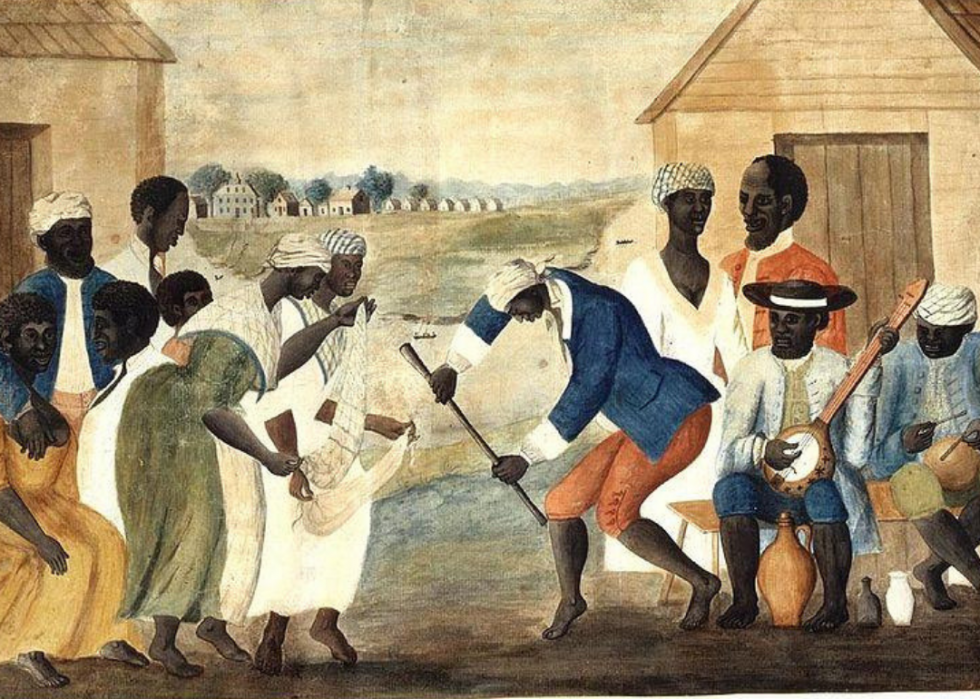
ane / 24
John Rose // Wikimedia Commons
1790: 17.8% of the American population is enslaved
- U.S. resident population: three,929,214
- Number of official states: xiii
- Median age of population: Not available for this year
- Immigrants obtaining legal resident status: Non available for this year
- Biggest cities: New York, NY (Population: 33,131), Philadelphia, PA (28,522), Boston, MA (18,320)
The first U.Due south. census included data on 16 recognized states (although Vermont wasn't included until 1791 after condign recognized as a country) and features the highest proportion of enslaved people to free of whatever demography. By law, every household in the U.s.a. was to exist visited, their information recorded, and the information posted in a public identify.
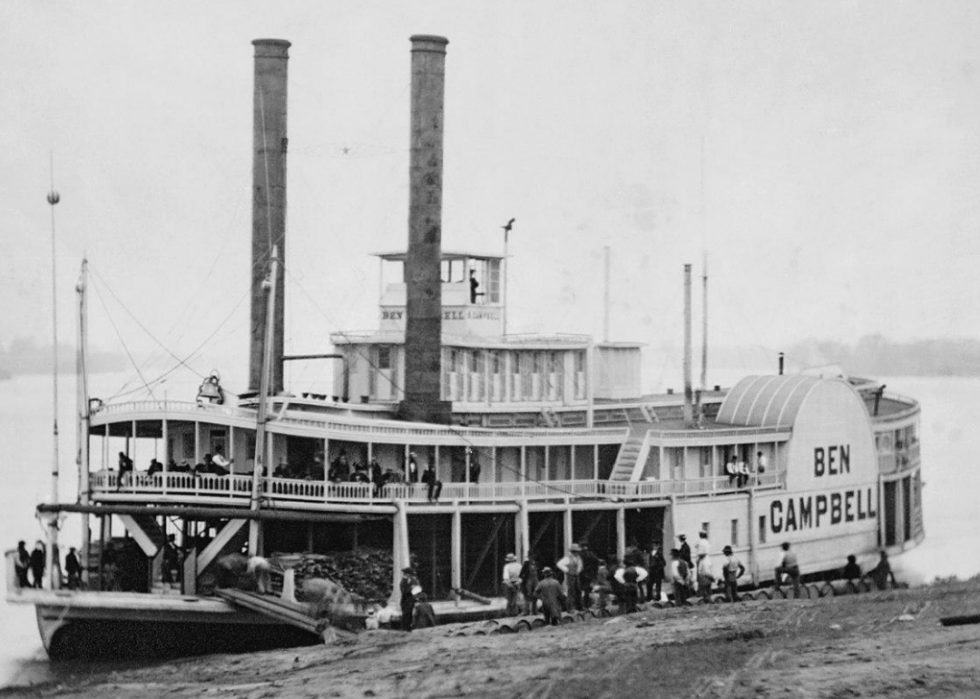
2 / 24
Library of Congress // Wikimedia Commons
1800: New territories to the Northwest
- U.S. resident population: 5,308,483
- Number of official states: 16
- Median historic period of population: Not bachelor for this twelvemonth
- Immigrants obtaining legal resident status: Not bachelor for this year
- Biggest cities: New York, NY (Population: lx,515), Philadelphia, PA (41,220), Baltimore, MD (26,514)
The second-ever demography was authorized to include new territories and states northwest of the Mississippi Territory and Ohio River. That year, v.3 meg people were recorded as living in the U.S.—893,602 of whom were enslaved.
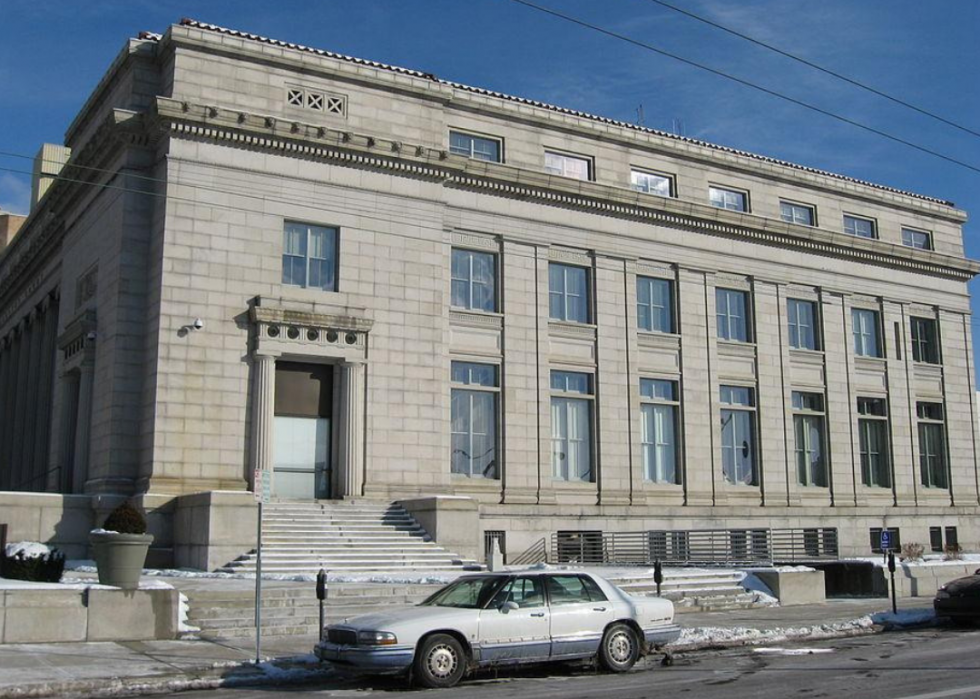
3 / 24
Nyttend // Wikimedia Commons
1810: Ohio is included on the census
- U.S. resident population: 7,239,881
- Number of official states: 17
- Median age of population: Not available for this year
- Immigrants obtaining legal resident status: Not bachelor for this yr
- Biggest cities: New York, NY (Population: 96,373), Philadelphia, PA (53,722), Baltimore, MD (46,555)
The census of 1810 was the first to include the new state of Ohio. The authorization human activity for this year'due south demography required assistant marshals to brand home visits in order to ostend headcounts.
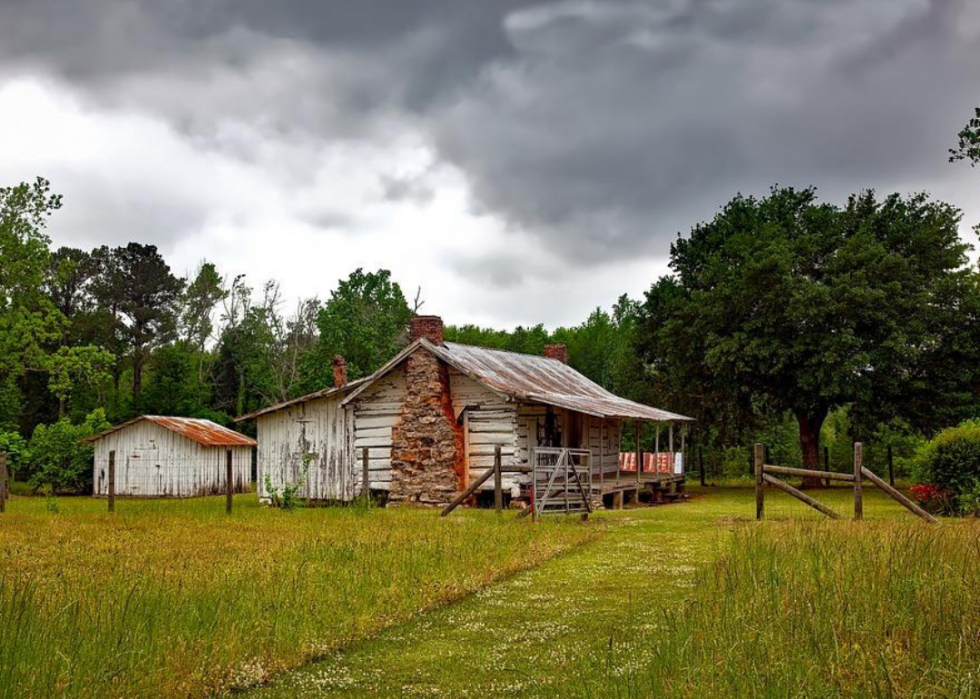
iv / 24
1820: The U.South. has six new states
- U.Due south. resident population: 9,638,453
- Number of official states: 23
- Median age of population: 16.7
- Immigrants obtaining legal resident status: 8,385
- Biggest cities: New York, NY (Population: 123,706), Philadelphia, PA (63,802), Baltimore, Dr. (62,738)
The 1820 census featured half dozen newly recognized states: Alabama, Illinois, Indiana, Louisiana, Maine, and Mississippi. The new states too indicated a chop-chop swelling population that was fast-budgeted 10 million.

v / 24
Famartin // WIkimedia Commons
1830: U.Southward. eye of population is in nowadays-day West Virginia
- U.S. resident population: 12,860,702
- Number of official states: 24
- Median age of population: 17.2
- Immigrants obtaining legal resident status: 23,322
- Biggest cities: New York, NY (Population: 202,589), Baltimore, Doctor (80,620), Philadelphia, PA (80,462)
The mean middle of population for an area is a geographic point representing the exact center balance of a population. In 1830, that mean center was roughly 170 miles west of Washington D.C., in what is now West Virginia's Grant Canton; past 2010, it had shifted to Texas County, Missouri; and in 2020, to Wright Canton, Missouri.
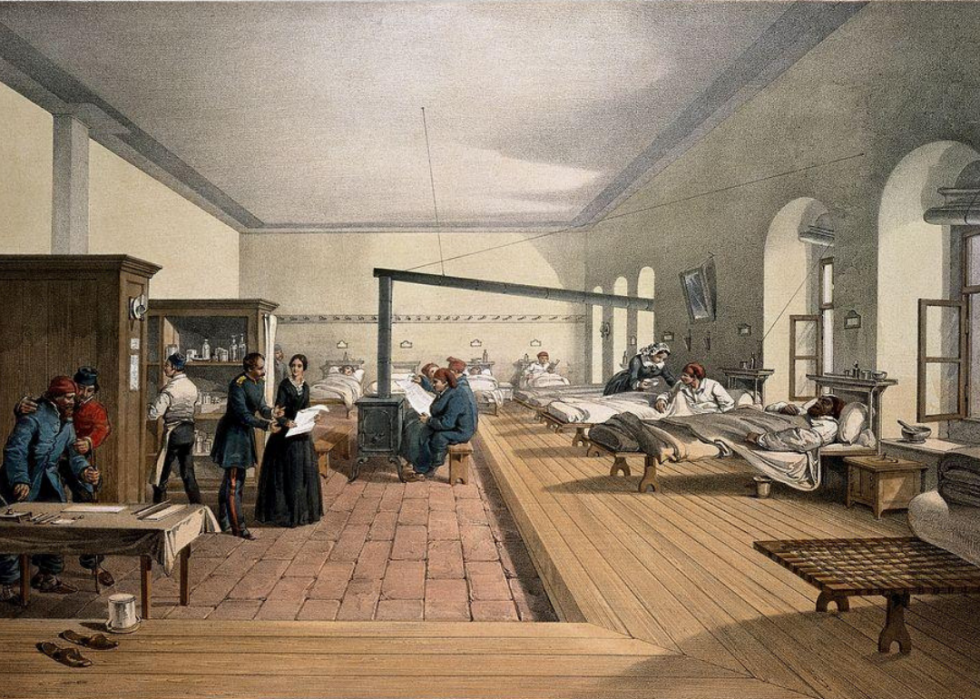
6 / 24
William Simpson // Wikimedia Commons
1840: 'Mental disease' controversy
- U.South. resident population: 17,063,353
- Number of official states: 26
- Median age of population: 17.8
- Immigrants obtaining legal resident condition: 84,066
- Biggest cities: New York, NY (Population: 312,710), Baltimore, MD (102,313), New Orleans, LA (102,193)
The 1840 census was the kickoff that sought to tally the number of "insane" or "idiotic" Americans. The results of the questionable survey showed steep numbers of blackness people in free states suffering from mental illness—while mental illness rates were markedly lower in slaveholding states. The flawed results were illuminated in an 1844 report in the American Journal of the Medical Sciences and their errors exposed; however, no revisions were fabricated to the census information.

7 / 24
U.S. Census Bureau // Flickr
1850: Census board established
- U.S. resident population: 23,191,876
- Number of official states: 30
- Median age of population: 13.ix
- Immigrants obtaining legal resident condition: 369,980
- Biggest cities: New York, NY (Population: 515,547), Baltimore, Dr. (169,054), Boston, MA (136,881)
The attorney general, secretary of state, and postmaster general comprised the first-e'er census board, created in 1849 and utilized in the 1850 census. The board was tasked with press census forms and preparing them for various topics. The population recorded on the 1850 census revealed a massive, 35.ix% jump from the 1840 census, to 23,191,876 people.
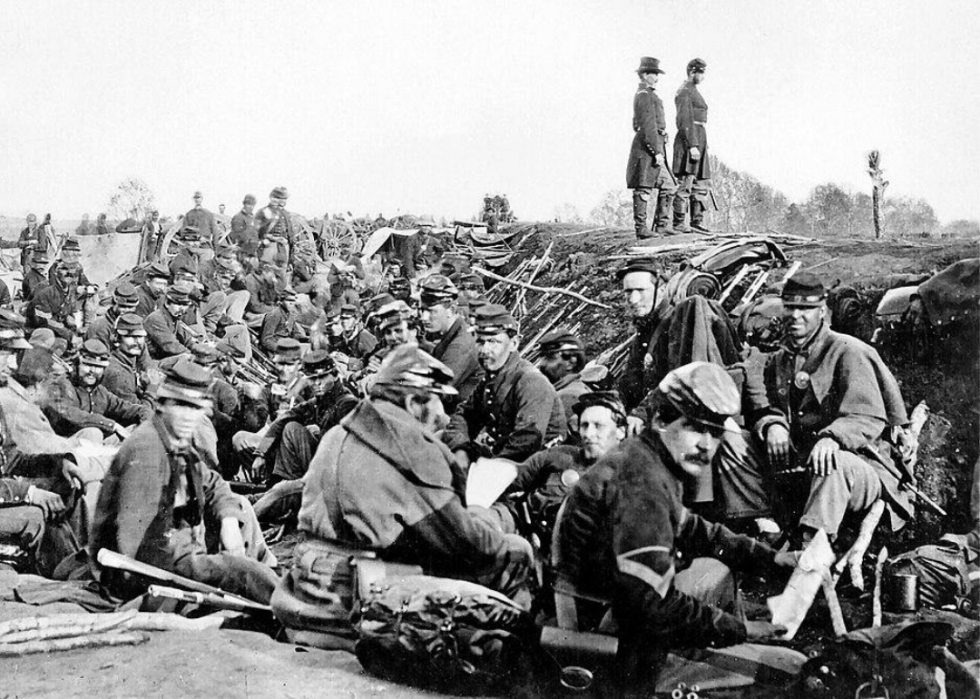
eight / 24
A.J. Russell // Wikimedia Eatables
1860: Census data used for Marriage Regular army maps
- U.S. resident population: 31,443,321
- Number of official states: 33
- Median age of population: 19.four
- Immigrants obtaining legal resident status: 153,640
- Biggest cities: New York, NY (Population: 813,669), Philadelphia, PA (565,529), Brooklyn, NY (266,661)
With the Civil State of war looming, cartographers used information from the 1860 demography—such as slave populations rail routes, and agricultural products by county—to draw up maps for Wedlock field commanders. Casualties in the state of war (620,000) stand for 2% of the entire population. With numbers adjusted for today'due south population, that would be like losing six.ii million people in a war.
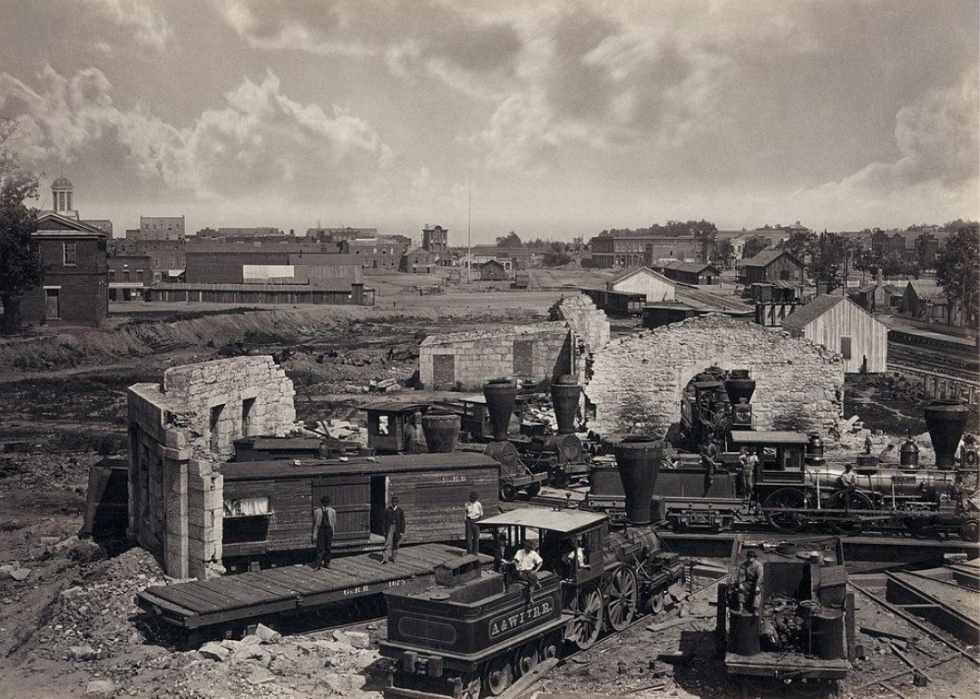
9 / 24
George N. Barnard // Wikimedia Commons
1870: The census in a post-Ceremonious State of war America
- U.S. resident population: 38,558,371
- Number of official states: 37
- Median age of population: twenty.2
- Immigrants obtaining legal resident status: 387,203
- Biggest cities: New York, NY (Population: 942,292), Philadelphia, PA (674,022), Brooklyn, NY (396,099)
Just v years later the end of the Civil War and the national emancipation of slaves, the 1870 Census was updated and the slave questionnaire was removed. Instead, the results provided an in-depth look at the African-American population. Additionally, this was the first census that included nativity questions and recorded the origins of foreign-built-in residents, too every bit the cities with the largest migrant populations.

ten / 24
Cushing Memorial Library and Archives // Wikimedia Commons
1880: Women become enumerators
- U.S. resident population: 50,189,209
- Number of official states: 38
- Median age of population: 22
- Immigrants obtaining legal resident status: 457,257
- Biggest cities: New York, NY (Population: 1,206,299), Philadelphia, PA (847,170), Brooklyn, NY (566,663)
1880 marks the first census in which women were able to serve every bit enumerators (those gathering information on behalf of the U.S. Census Agency). Five categories on that yr's demography were "Agriculture," "Manufacturing," "Mortality," "Population," and "Social Statistics."
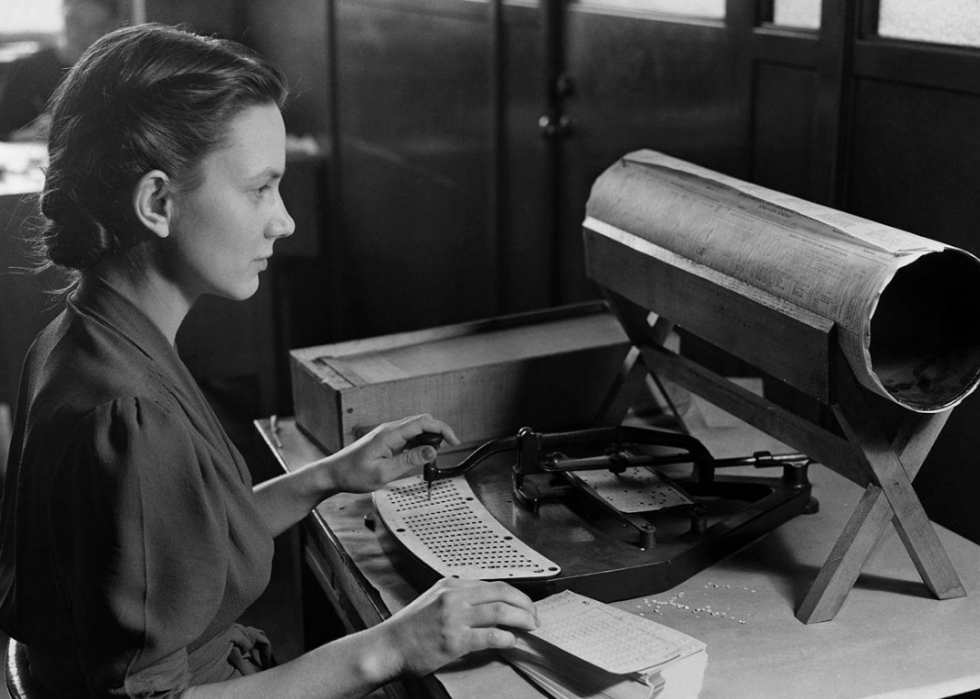
xi / 24
U.S. National Athenaeum and Records Administration
1890: Demography goes electric
- U.S. resident population: 62,979,766
- Number of official states: 42
- Median age of population: 22.nine
- Immigrants obtaining legal resident condition: 455,302
- Biggest cities: New York, NY (Population: one,515,301), Chicago, IL (ane,099,850), Philadelphia, PA (1,046,964)
The 1890 demography was the very get-go in which electronic tabulation was used. As the prior census took nearly a decade to tabulate, census officials were craving a more efficient style to aggregate the necessary data with few mistakes, different the piece of work-intensive and often mistake-laden hand-counting process. A former demography employee, Herman Hollerith, invented an electric car that revolutionized the demography and sold them under the newly formed Tabulating Auto Company. Somewhen, the company went from Tabulating Machines to International Business concern Machines and became IBM.
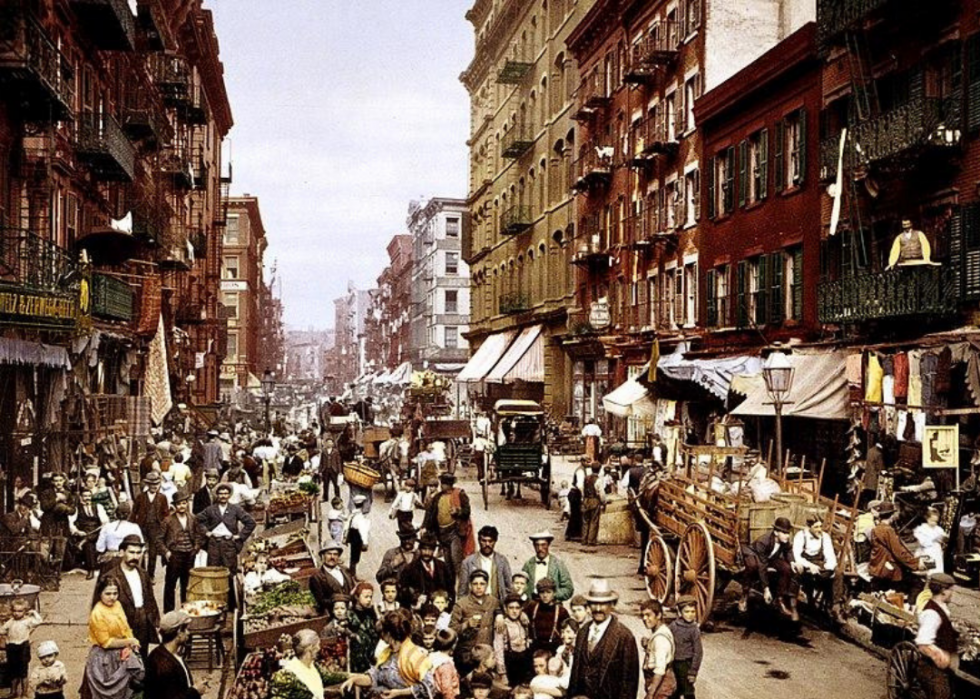
12 / 24
Detroit Publishing Co. // Wikimedia Commons
1900: New York Metropolis expands and Hawaii is added to demography
- U.S. resident population: 76,212,168
- Number of official states: 45
- Median age of population: 24.ane
- Immigrants obtaining legal resident status: 448,572
- Biggest cities: New York, NY (Population: 3,437,202), Chicago, IL (one,698,575), Philadelphia, PA (1,293,697)
The 1900 census was the first year that New York City included all five of its present boroughs, later the existing City of New York consolidated with the Bronx, Brooklyn, parts of Queens, and Staten Isle in 1898 in order to debate with Chicago, which was growing in size, business, and engineering. 1898 was besides the yr that the The states annexed Hawaii during the Castilian-American war, and the territory's residents were included in the overall population count.
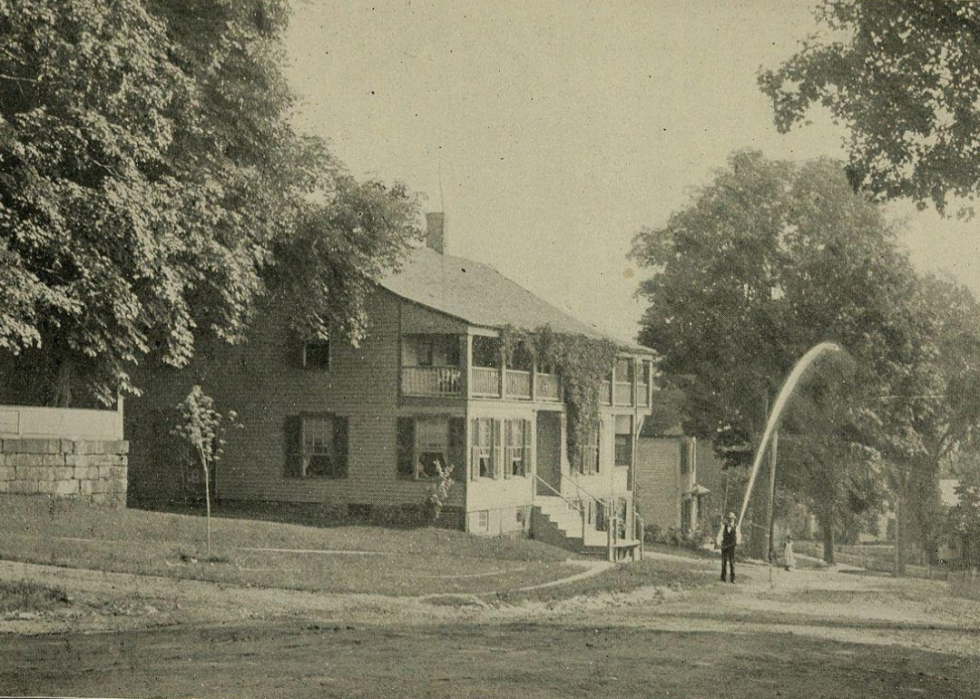
13 / 24
Central New England railway company // Wikimedia Commons
1910: Summertime vacations inspire move of Census Mean solar day date
- U.S. resident population: 92,228,496
- Number of official states: 46
- Median age of population: 25.3
- Immigrants obtaining legal resident status: 1,041,570
- Biggest cities: New York, NY (Population: 4,766,883), Chicago, IL (ii,185,283), Philadelphia, PA (1,549,008)
Arguing that city dwellers would be off to their vacation homes on June i, which had been Census Day since 1830, Demography Day was moved in 1910 to April 15. When the U.S. entered Earth War I seven years afterwards, data from the 1910 census proved vital in reporting on populations of draft-historic period men and the potential industrial output of each state.
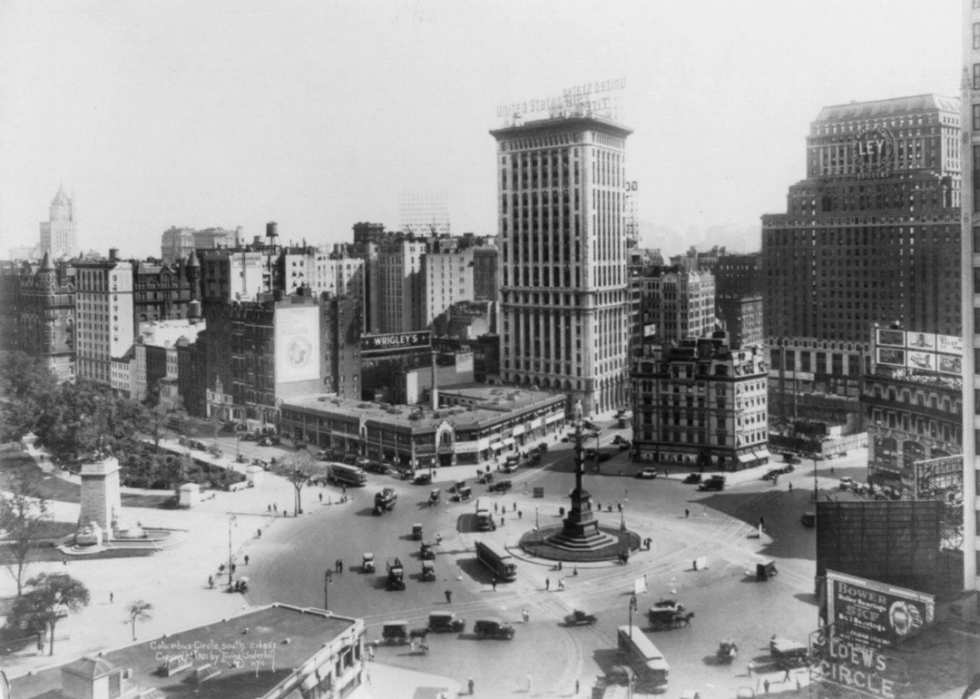
fourteen / 24
Library of Congress // Wikimedia Commons
1920: New York Country surpasses 10 million residents
- U.S. resident population: 106,021,537
- Number of official states: 48
- Median age of population: 26.5
- Immigrants obtaining legal resident status: 430,001
- Biggest cities: New York, NY (Population: 5,620,048), Chicago, IL (ii,701,705), Philadelphia, PA (1,823,779)
The date for the 1920 census was switched to January thank you to the Department of Agriculture; officials hoped that information about their about recent harvests would be more fresh in farmers' minds in winter, leading to more accurate data. In this census, iv new questions were added specifically to collect information on America'south immigrants: one question asked most year of naturalization and three asked about mother tongue. New York was the most populous state this twelvemonth at x,385,227 people, with more than half of those people living in New York City.

15 / 24
U.S. Census Bureau // Flickr
1930: The demography and the Great Depression
- U.S. resident population: 123,202,624
- Number of official states: 48
- Median age of population: 29
- Immigrants obtaining legal resident condition: 241,700
- Biggest cities: New York, NY (Population: 6,930,446), Chicago, IL (3,376,438), Philadelphia, PA (1,950,961)
The 1930 census reflected growing American consumerism: it was the first to ask a question nigh a consumer detail, through inquiring whether respondents endemic a "radio set." But this census also reflected concerns most economic turmoil, coinciding with the kickoff of the Great Depression, through more detailed questions about respondents' employment or lack thereof. In fact, academics and statisticians were so intent on analyzing nationwide unemployment information, they pressured the Census Bureau into conducting a special unemployment census in January 1931.
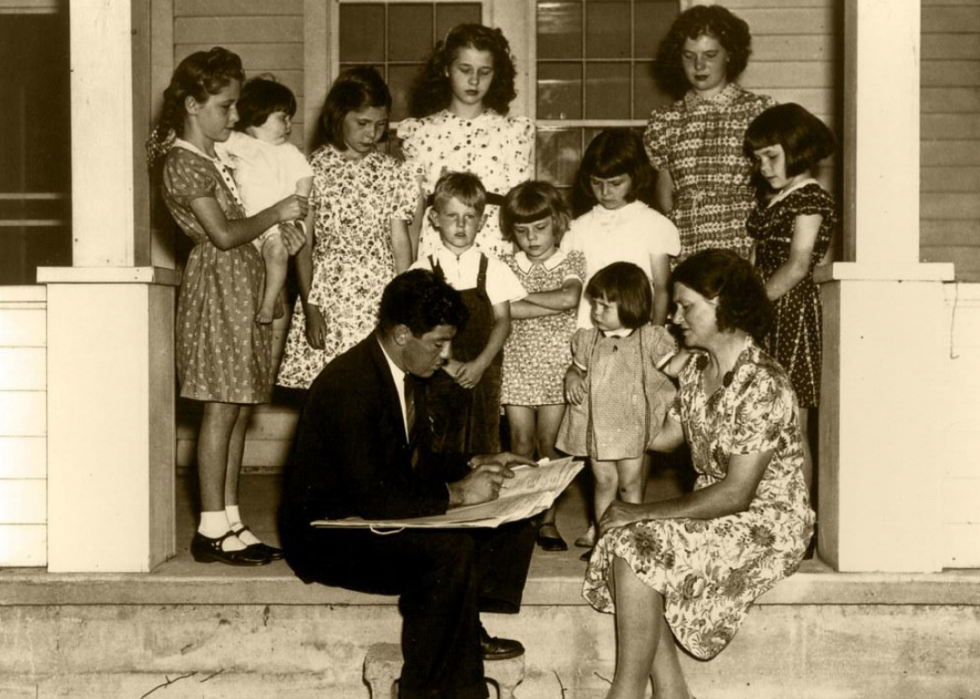
16 / 24
U.S. Census Bureau // Flickr
1940: Beginning use of probability sampling
- U.S. resident population: 132,164,569
- Number of official states: 48
- Median age of population: 30.two
- Immigrants obtaining legal resident status: 70,756
- Biggest cities: New York, NY (Population: 7,454,995), Chicago, IL (iii,396,808), Philadelphia, PA (i,931,334)
The 1940 Census was the get-go national census to utilise probability sampling, a statistical technique in which subjects are randomly selected in society to ensure that a minor sample accurately reflects an entire population. This technique allowed the number of questions asked by the Census Agency to exist raised without putting a huge strain on the respondents or on the analysts who would process the data and immune census results to be released much earlier. New questions this year discussed employment, unemployment, internal migration, and income.
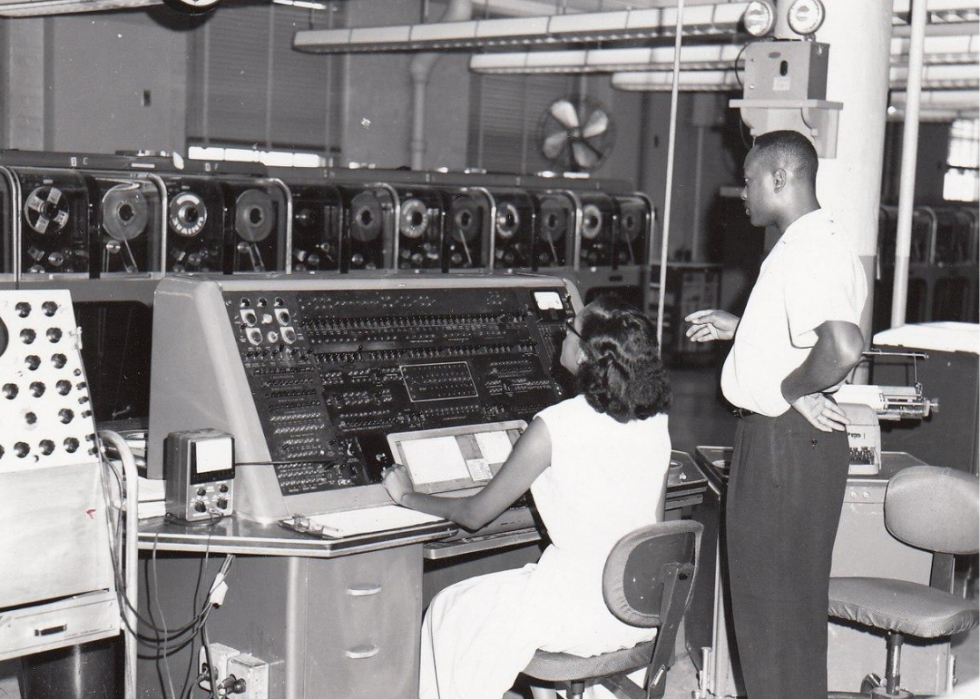
17 / 24
U.S. Census Bureau // Wikimedia Commons
1950: Census pulls in Americans away and computers at home
- U.S. resident population: 151,325,798
- Number of official states: 48
- Median age of population: 29.6
- Immigrants obtaining legal resident status: 249,187
- Biggest cities: New York, NY (Population: vii,891,957), Chicago, IL (3,620,962), Philadelphia, PA (2,071,605)
In 1950, the Census Agency expanded its questioning to include members of the war machine and government employees living abroad; some civilians living abroad were also included (reported past their families or neighbors back at dwelling house), but this data was not of sufficient quality to be included in published statistics. Afterward that decade, the Demography Agency became the commencement not-military machine agency in America to use a calculator: UNIVAC I, used to tabulate statistics for the 1954 economical census, weighed 16,000 pounds.
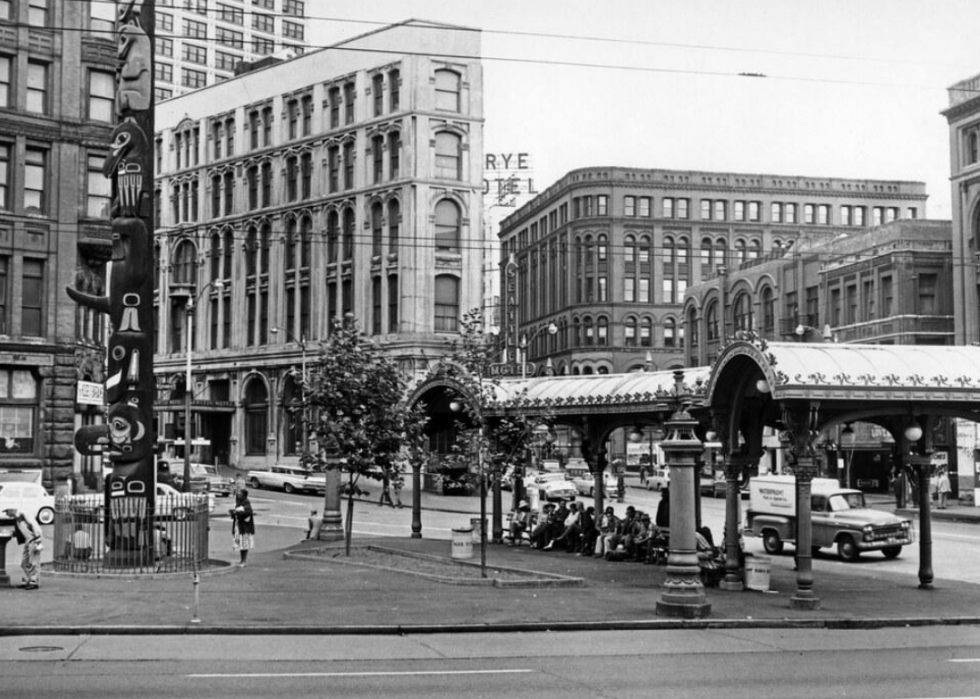
xviii / 24
Seattle Municipal Archives // Flickr
1960: Tracking increased urbanization
- U.Due south. resident population: 179,323,175
- Number of official states: 50
- Median historic period of population: 29.v
- Immigrants obtaining legal resident status: 265,398
- Biggest cities: New York, NY (Population: vii,781,984), Chicago, IL (3,550,404), Los Angeles, CA (ii,479,015)
For the first fourth dimension, all 50 states in 1960 had a population of more than than 200,000, with well-nigh fourscore% of the nation'south population living in urban areas. Census enumerators working in urban areas practiced random sampling by questioning every fourth housing unit. Meanwhile, in areas of lower population density, a mail-out census was used for the first time. This year's census included new questions on identify of piece of work and means of transportation to work.
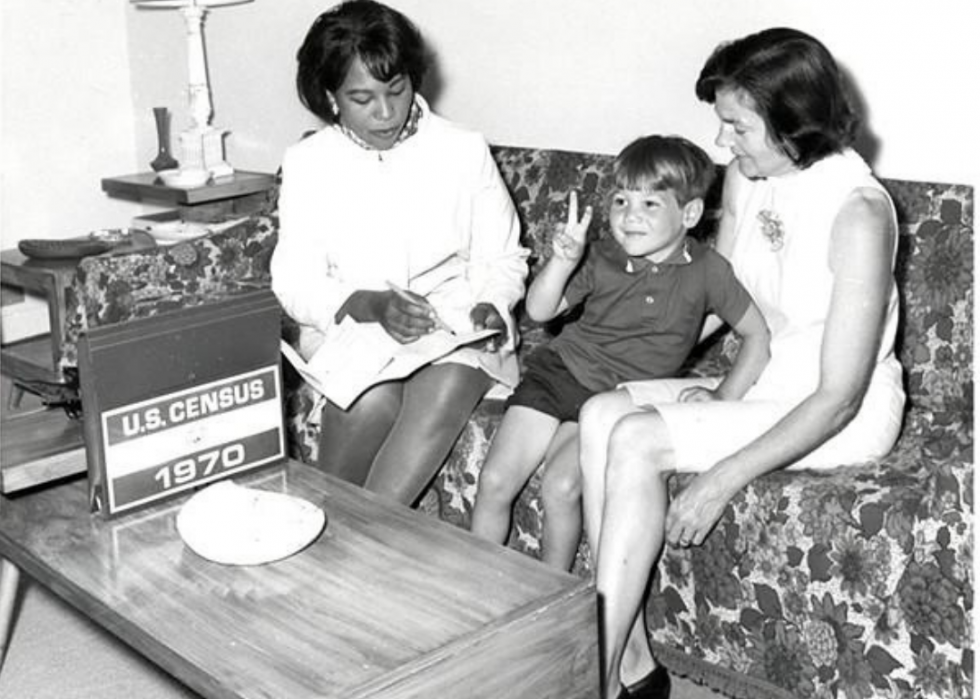
19 / 24
1970: California is the virtually populous land
- U.Due south. resident population: 203,302,031
- Number of official states: 50
- Median historic period of population: 28.1
- Immigrants obtaining legal resident condition: 373,326
- Biggest cities: New York, NY (Population: 7,894,862), Chicago, IL (3,366,957), Los Angeles, CA (2,816,061)
Thirteen questions were asked of all households that adhered to that yr's housing theme. Questions included inquiries nearly where there was a phone in the household, whether there was a flush toilet, and costs of utilities. The population U.S. population rose by thirteen.4% between 1960 and 1970, bringing numbers upwards to 203.4 1000000, and marked the commencement census twelvemonth since 1800 that New York was non the most populous state in the U.Due south. (California came in first)

xx / 24
Famartin // Wikimedia Commons
1980: Advertising campaign seeks more robust response rates
- U.Southward. resident population: 226,542,199
- Number of official states: 50
- Median age of population: 30
- Immigrants obtaining legal resident status: 524,295
- Biggest cities: New York, NY (Population: seven,071,639), Chicago, IL (3,005,072), Los Angeles, CA (2,966,850)
A campaign in 1978 sought to increase public awareness and ensure more people filled out and returned their questionnaires. California became the first land to take a population of twenty million (that number today exceeds 39.5 million).

21 / 24
David Jones // Wikimedia Commons
1990: LA overtakes Chicago as the second-largest city
- U.S. resident population: 248,709,873
- Number of official states: 50
- Median age of population: 32.8
- Immigrants obtaining legal resident status: ane,535,872
- Biggest cities: New York, NY (Population: 7,322,564), Los Angeles, CA (3,485,398), Chicago, IL (2,783,726)
This census used two questionnaires, a "curt form" and a "long form": The short form asked 13 questions to 100% of the population, while the long form asked 45 questions to xx% of the population. The Census Bureau connected to increase public awareness of the census this year, specifically publicizing to Black Americans by recruiting Nib Cosby, Magic Johnson, Alfre Woodard, and Debbye Turner as spokespeople. In the resulting population counts, Los Angeles was the second-largest metropolis in America at 3.5 meg people—pushing Chicago out of this summit spot for the first time since 1890.
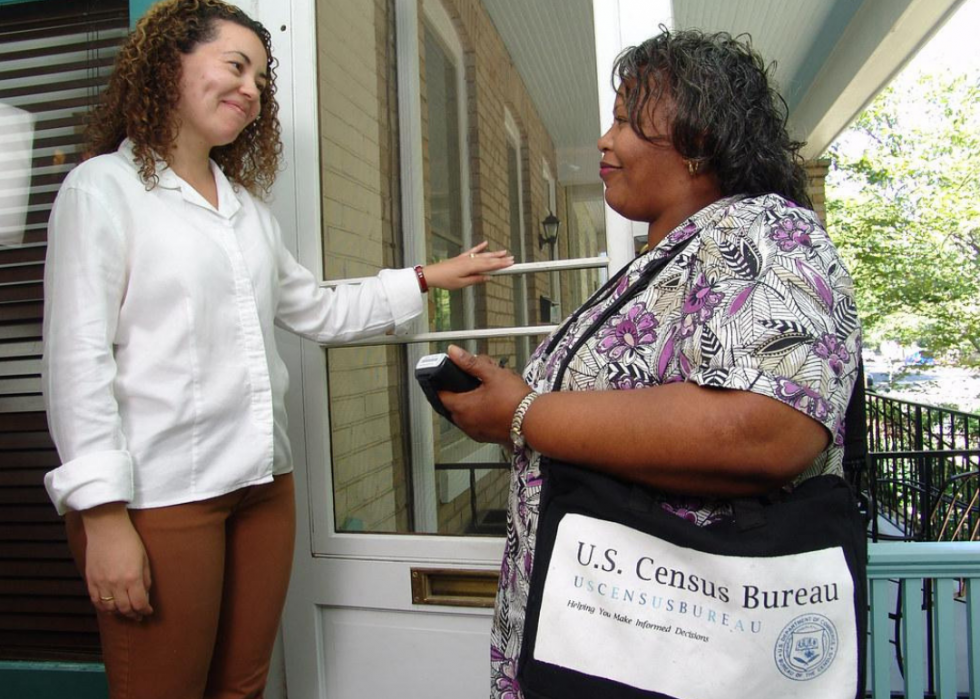
22 / 24
U.S. Census Bureau // Flickr
2000: Census takes to the internet
- U.Southward. resident population: 281,421,906
- Number of official states: fifty
- Median historic period of population: 35.3
- Immigrants obtaining legal resident status: 841,002
- Biggest cities: New York, NY (Population: 8,008,278), Los Angeles, CA (3,694,820), Chicago, IL (two,896,016)
Respondents to the 2000 census were able to apply the Net to submit their answers to the short form, which was the shortest census questionnaire since 1820 at only seven questions. Seventy thousand households took this option. The internet was besides the main medium for dissembling 2000 census data: Tables could be purchased on CD-ROM and DVD or viewed through an online database called the American FactFinder, which is withal the name of the demography database today.

23 / 24
U.South. Census Bureau // Wikimedia Commons
2010: Same-sexual practice married couples are included
- U.S. resident population: 308,745,538
- Number of official states: 50
- Median age of population: 37.2
- Immigrants obtaining legal resident status: 1,042,625
- Biggest cities: New York, NY (Population: 8,175,133), Los Angeles, CA (3,792,621), Chicago, IL (two,695,598)
LGBTQ+ respondents to the 2010 census could mark their spouses as "husband or married woman" for the get-go time, while an "unmarried partner" pick was still bachelor for same-sex and opposite-sexual activity couples alike. The 2010 census was publicized with the most extensive outreach campaign however, including a road tour, a national "Teach Demography Week," and advertisements in 28 languages.

24 / 24
Linda Parton // Shutterstock
2020: Census drove opens every bit states close due to COVID-19
- U.S. resident population: 331,449,281
- Number of official states: 50
Census collection officially began in Jan 2020 in Toksook Bay, Alaska; merely every bit more people received their ballots, demography collectors faced the unique challenge of making people in America got counted while adapting to unprecedented challenges caused past the COVID-19 pandemic. U.S. Census Bureau Acting Director Ron S. Jarmin revealed some of the unique ways the Bureau worked to make sure people filled out the census, including advertising on pizza boxes, promoting the census at food banks, and partnering with colleges and universities across the country to encourage people to fill out their ballots.
Trending Now
© Stacker 2022. All rights reserved.
Source: https://stacker.com/stories/3230/how-america-has-changed-first-census-1790
0 Response to "what happened to the percentage of americans living in cities between 1790-1840"
Post a Comment